Calling DKK 458,000 a bargain price would be an outright lie if it was the former Tesla Model 3 Performance. With the new one, however, Tesla has made a serious effort.
The first Tesla Model 3 Performance was fast and not much else. At the launch in 2018, there really wasn’t much more to impress either. An acceleration from 0 to 100 km/h in under four seconds in a car for human money was quite unheard of. It is no longer the case, and if you have experienced the acceleration of one fast electric car, you have experienced them all.
Fortunately, Tesla knows this well. In the new Tesla Model 3 Performance, they have therefore done more than just double the elastic. Here is adaptive chassis, stiffer chassis, bigger brakes and intelligent electronic systems to control the forces, of which more have also come. The question is how the trouble works in practice.
I have the pleasure of trying it out when the new Tesla Model 3 Performance is put to the test at Bilbasen.

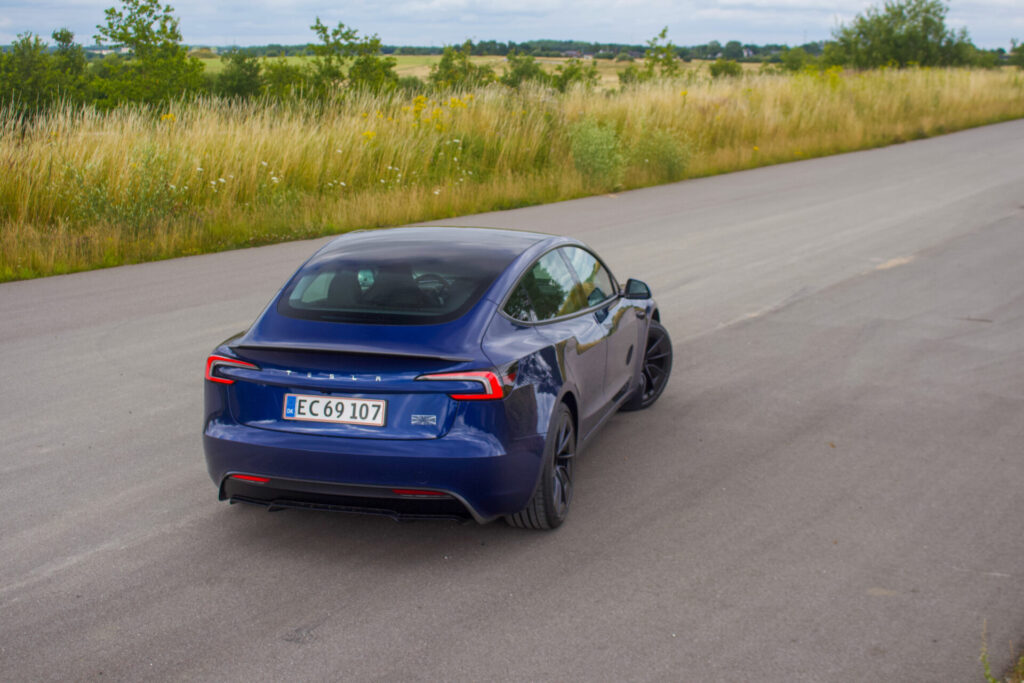
No one is in doubt
With its predecessor, it took a connoisseur to point out the Performance variant in a crowd of regular Model 3s. With the new Tesla Model 3 Performance, sporty optics have been turned up, making it considerably harder to look at.
The front bumper is completely different from the one that Tesla puts on, for example, a Long Range variant. Here is the so-called lip (or splitter) on the underside of the bumper, as well as upright air intakes below the headlights that became narrower and sharper with the Highland update.
The rear end has also been given a more prominent lip, which goes well with the glued-on carbon fiber rear wing, and which, together with a Plaid-like badge, makes everyone aware that it’s the sporty variant. The optical additions, together with a lower chassis and 20” forged alloy wheels, ensure a Tesla Model 3 Performance that looks lower, wider and angrier than the domestic versions.
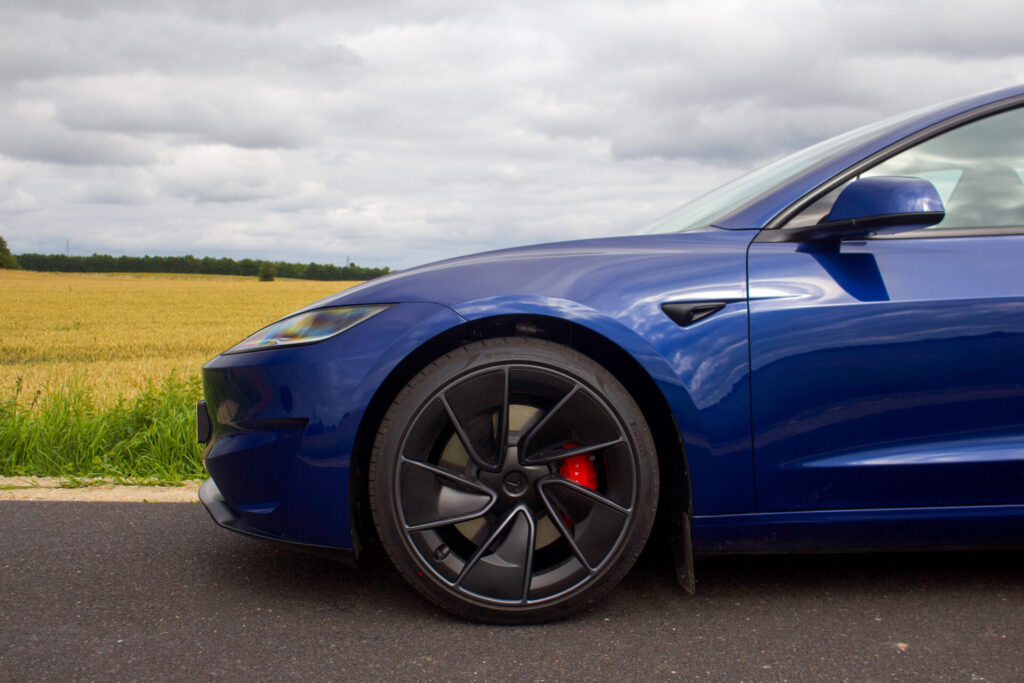


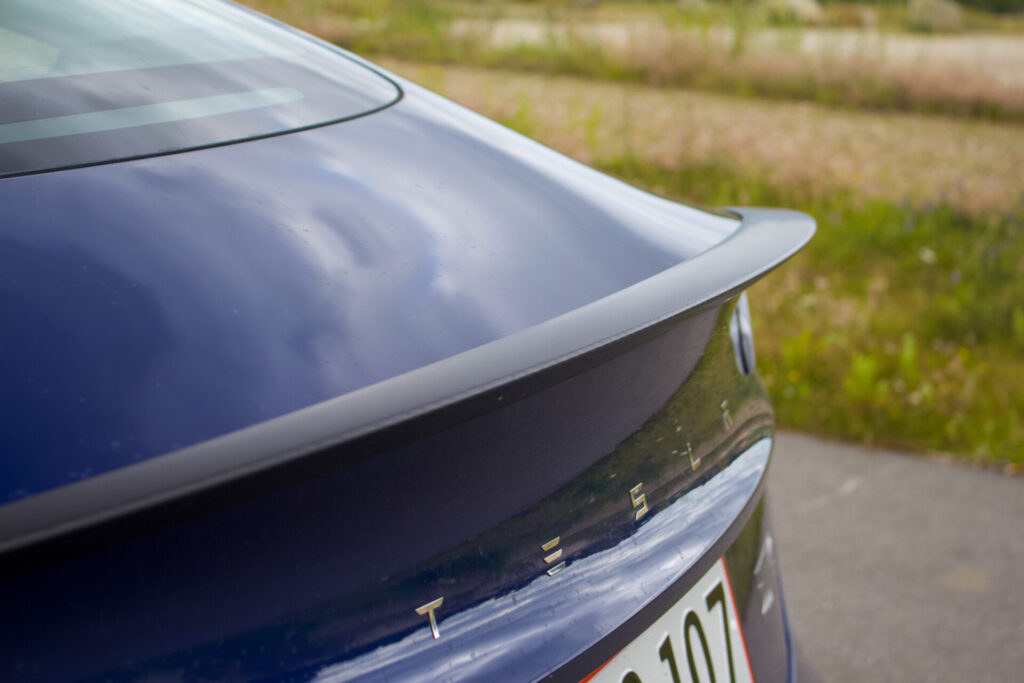
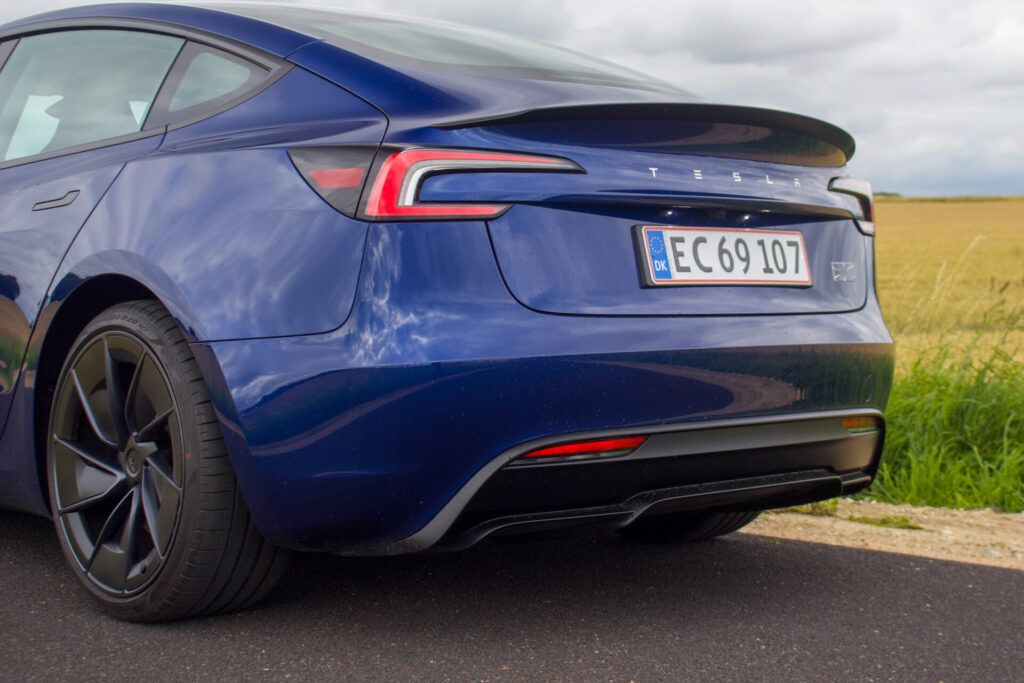

The powers are secondary
Although it looks similar, the sign on the tailgate is not a Plaid sign. Therefore, there is also not a mind-boggling 1,000 hp on the taps, as there is in the Model S and Model X. In fact, the number of forces has not grown tremendously. Where the predecessor was estimated to be around 440 hp, you now get 460 hp, and that’s fine. Because in the story of the new Tesla Model 3 Performance, the forces are secondary.
More important comes first the distribution of the forces, which are controlled by a new so-called Performance 4DU unit. It constantly regulates which forces must be sent where and when with a greater bias to the rear wheels. Another electronic unit simultaneously ensures that systems such as ABS, stability control and adaptive chassis are always calibrated with the amount of power distributed by the Performance 4DU.
More important than the powers are also the mechanical upgrades. As well as being adaptive, the construction of the chassis itself is quite complicated and blessed with stiffer springs, thicker anti-roll bars and new bushings made specifically for the Performance variant. In addition, the chassis is stiffer and the brakes are larger.
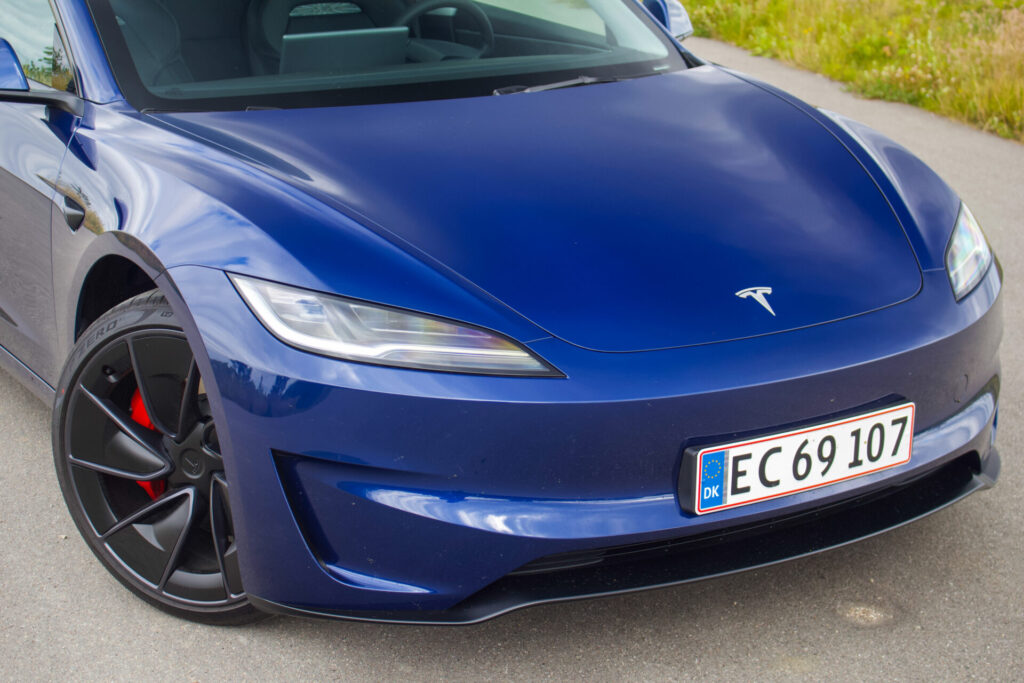
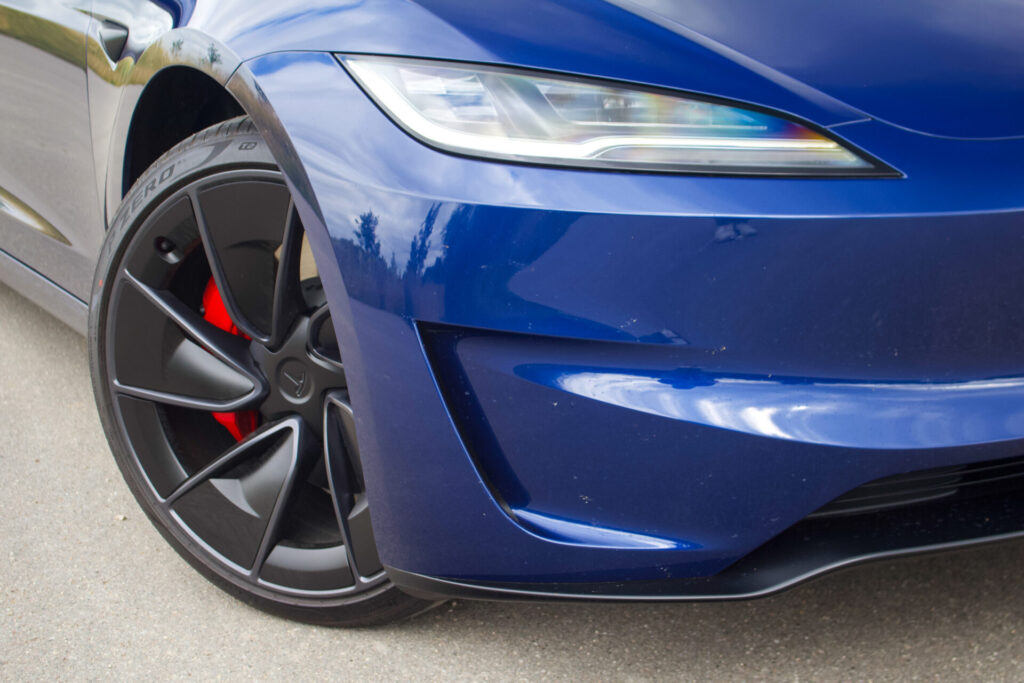
Inside, only the seats are different from a regular Model 3. Now you actually get sports seats in the sports version and they are exactly as cool as they look. These are genuinely good seats, which should be available as an add-on to the householder variants for an additional price. They hug and hold tight when you drive fresh, and at the same time ensure great comfort during everyday driving.
Can it be felt?
Yes! The trouble is felt. The power delivery and distribution is impressive and makes the Tesla Model 3 Performance playfully intuitive to operate. It can hardly be made much easier to handle close to 500 hp, because via a carefully tuned accelerator pedal you always have a clear sense of how much power you are sending to the asphalt. It is almost telepathic and gives an experience of control when you drive fresh.
The adaptive chassis is also the best that has come out of Tesla. It is firm but absolutely compliant in normal driving, while in sporty mode it tightens up and is stable, even when you encounter bumps in the middle of turns. This testifies to a balanced undercarriage.
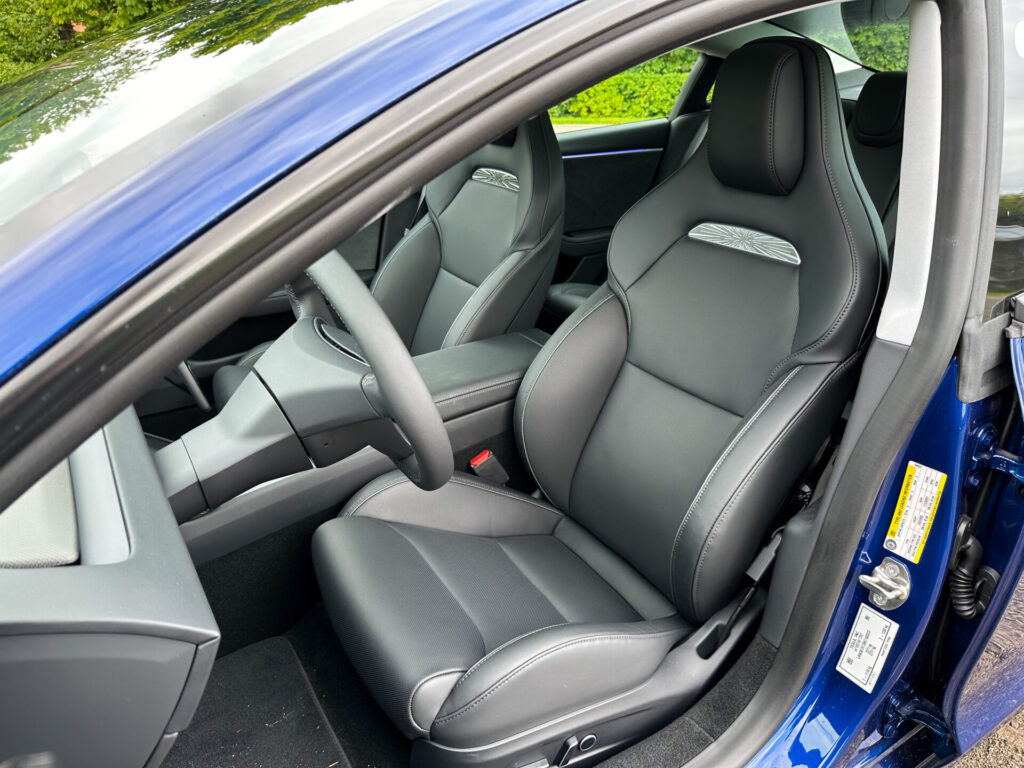
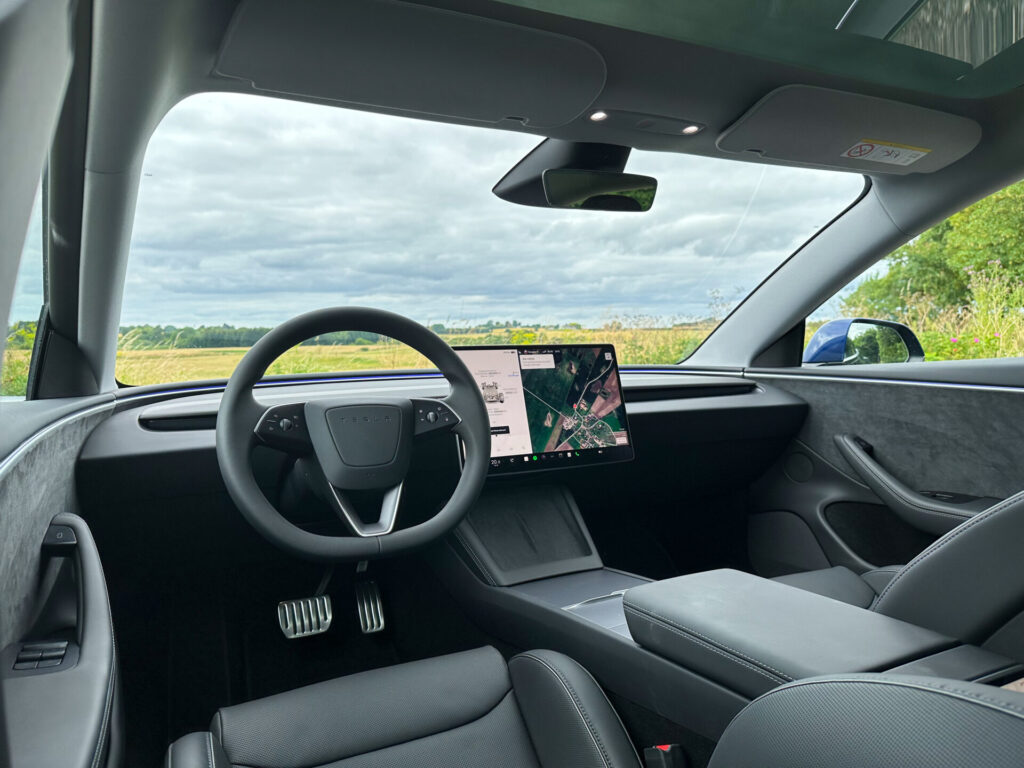
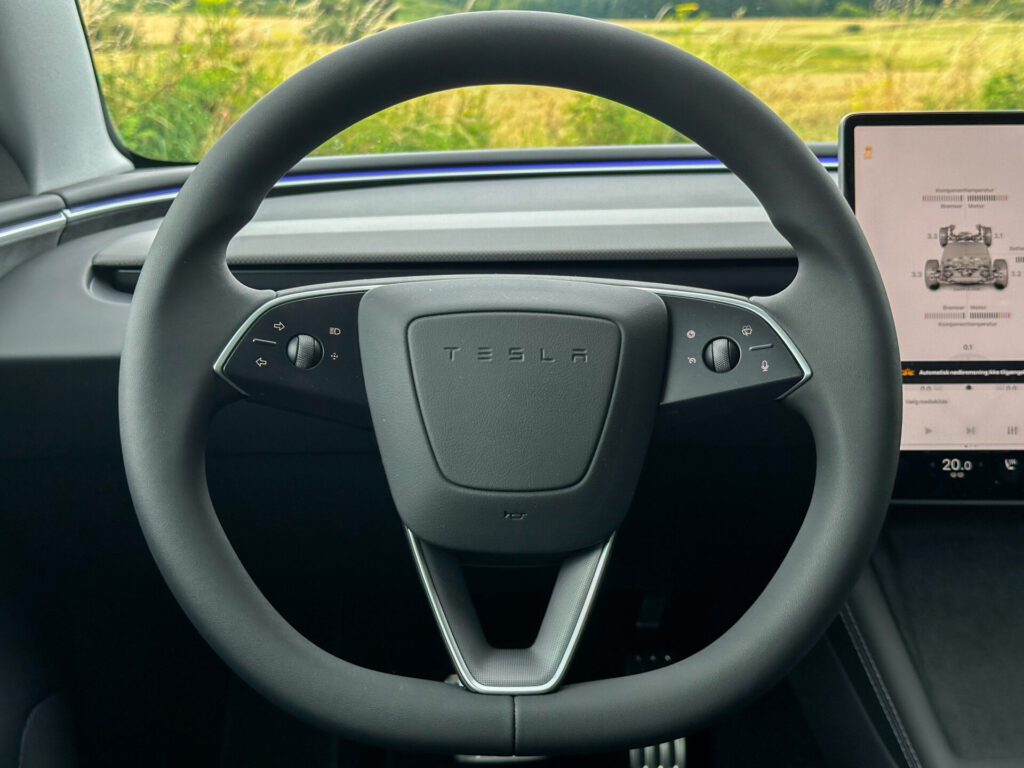

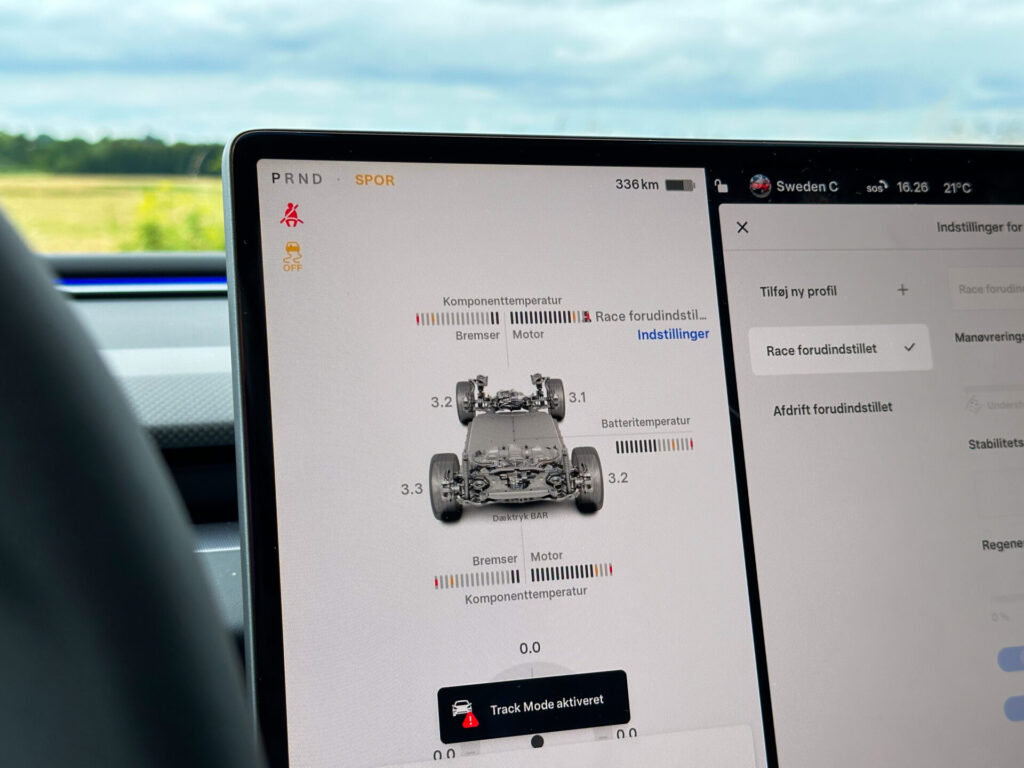


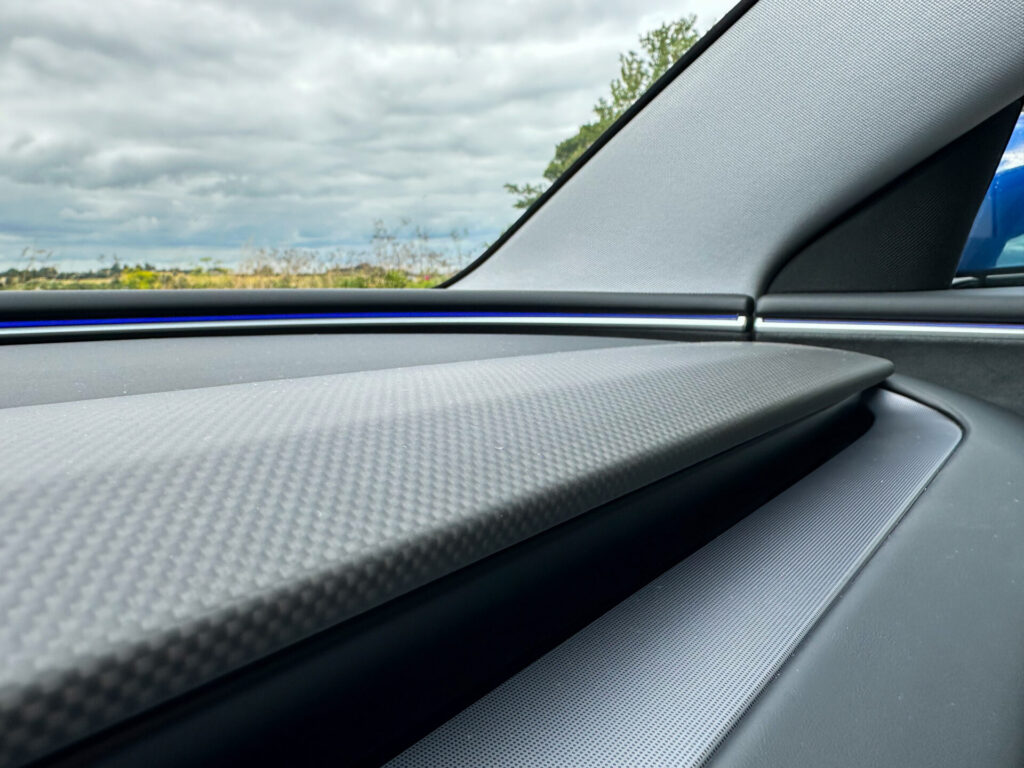
Of course, it also helps that the Model 3 Performance is a lightweight in the electric car category with a combat weight of 1,851 kg. With great conviction, the chassis handles quick changes of direction and the weight shift that comes with it. The many electronic systems are constantly at work to ensure balance without becoming too intrusive. Instead, they ensure that the car sucks itself to the ground and that all slippage does not occur from the now wider rear tires – unless you want it differently.
Because with the new Track Mode V3 A whole new world opens up for Tesla. Here is more information and adjustment options than Tesla has ever given access to. Keep an eye on engine and brake temperature, adjust the amount of force on the front and rear axle or turn down the stability assistance. Even the recuperation can be adjusted, which is a first for a Tesla.
If you turn off the assistance and send as much power to the rear wheels as the rear Performance electric motor allows, Tesla completely leaves the fate up to you. There is no dear mother here, and if you are not careful, the rear end overtakes you inside.
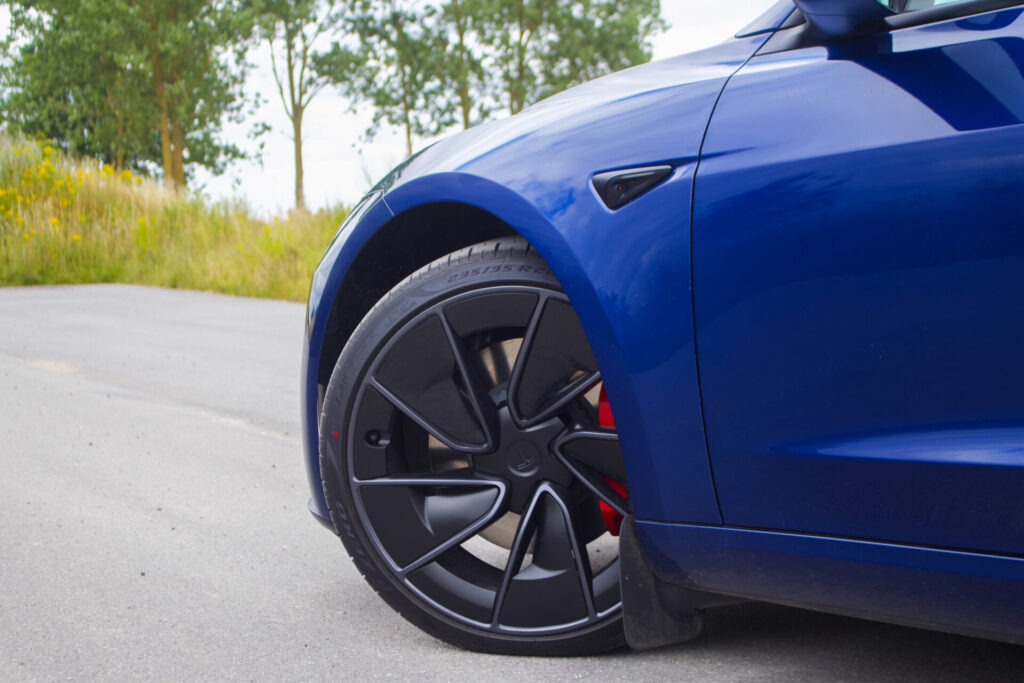
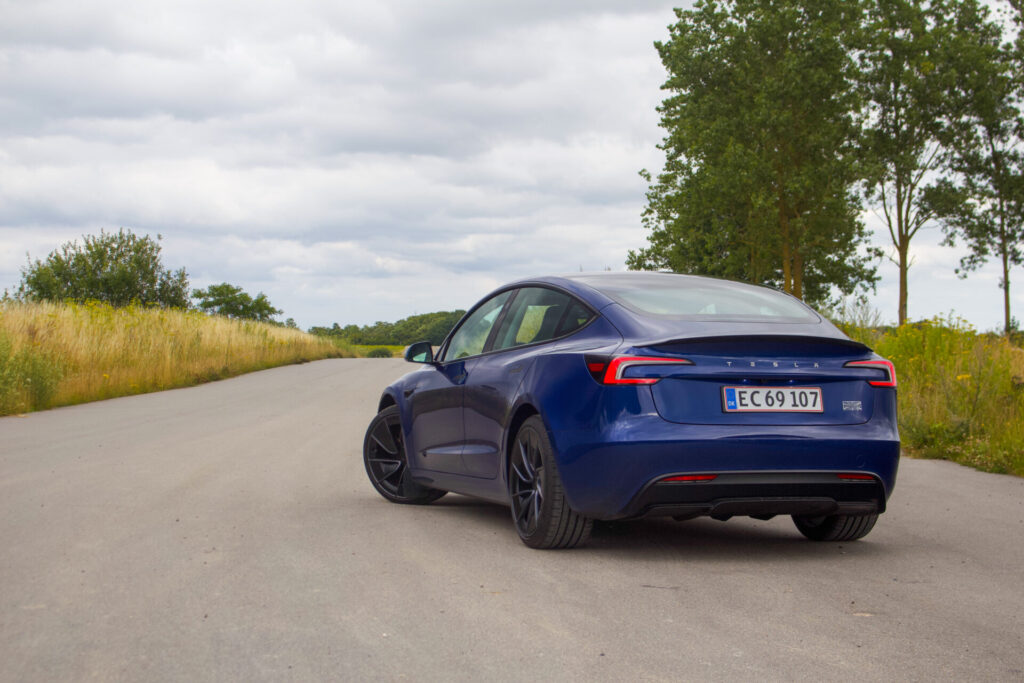
Does the BMW M3 checkmate?
Unexpected powers. Balance. Control. Play sickness. Wheel spin. It sounds funny because it is. So funny that it makes you want to reopen the controversy that Elon Musk mistakenly threw himself into by comparing the first Tesla Model 3 Performance to a BMW M3 in connection with the launch six years ago. A dispute, like the Model 3 Performance never was geared to.
The new Tesla Model 3 Performance comes closer without, however, being able to drive right up to the side of the Bavarian bully. Even if you fail to include the emotional element of song and vibration that BMW’s pumped inline sixes deliver. Tesla has consistently not cracked the code for a cool and sporty steering gear.


The steering in the Model 3 Performance is admittedly heavily weighted, but it’s artificial, and it lacks feel with the front wheels. The reaction to control inputs is both sharp and precise, so it is always with the feeling that it is a Logitech steering wheel connected to the computer that you are operating. It is clearly better than the one in the predecessor and tighter than what you get in regular Model 3 variants. However, it is no match for the M3.
Although the brakes are only slightly smaller than those in the BMW M3, and the weight is only slightly higher, the updated brakes in the Tesla Model 3 Performance do not have the same weight either. In reality, the braking distance is probably about the same, but the brake pressure is harder to read as well as dose. It is a scratch in the paint on the otherwise distinguished dynamics on winding back roads.
Spot price
Certainly the Tesla Model 3 Performance is less hard-boiled and accomplished than a BMW M3. On the other hand, it also costs a quarter of an M3, which brings me on to the aforementioned spot price. Because even though DKK 458,000 is a lot of money, it is cheap when you take the work and effort into account. The easy solution had been 1,000 hp and launch control. Instead, Tesla has gone the way of dynamics.

For DKK 458,000 you get a regular supersedan, where things have been thought of. The idea is to give the driver the opportunity to fine-tune the driving experience without drowning him in options such as the Hyundai Ioniq 5 N. The idea is to provide a sporty driving experience without putting everyday friendliness and comfort out of control, and without letting the price slip away.
The Tesla Model 3 Performance is no M3 killer, and that’s no shame. For the German is not only the best sedan of its kind – it is also four times more expensive. The Tesla Model 3 Performance is not four times less fun than the M3, and for the money it doesn’t get much better.
SPECIFICATIONS
Tesla Model 3 Performance
Motor: Electric motor front and rear
Performance: 520 hp / 660 Nm (estimated)
0-100 km/h: 3.1 seconds
Top speed: 262 km/h
Consumption: 16.7 kWh/100 km
Battery Capacity: 78.1 kWh
Charging capacity: 250 kW
Range: 528 kilometers
Dimensions (L/W/H): 472/185/145 cm
Curb weight: 1,851 kilos
Draw weight: 1,000 kilos
Trunk volume: 682 litres
Price: DKK 458,802 (Model 3 available from DKK 311,990)
Private leasing (one-off payment/monthly payment): Not disclosed
Tax basis, company car: Not disclosed
